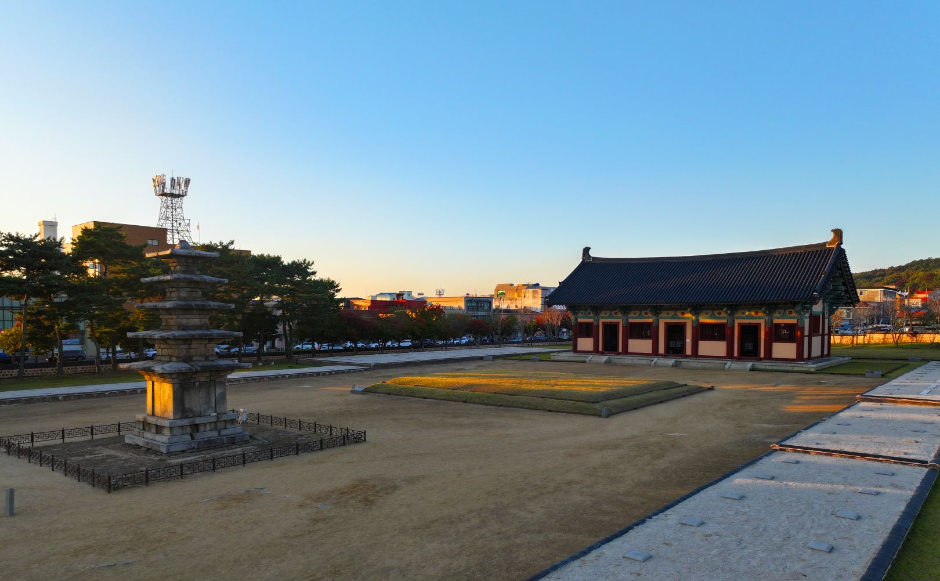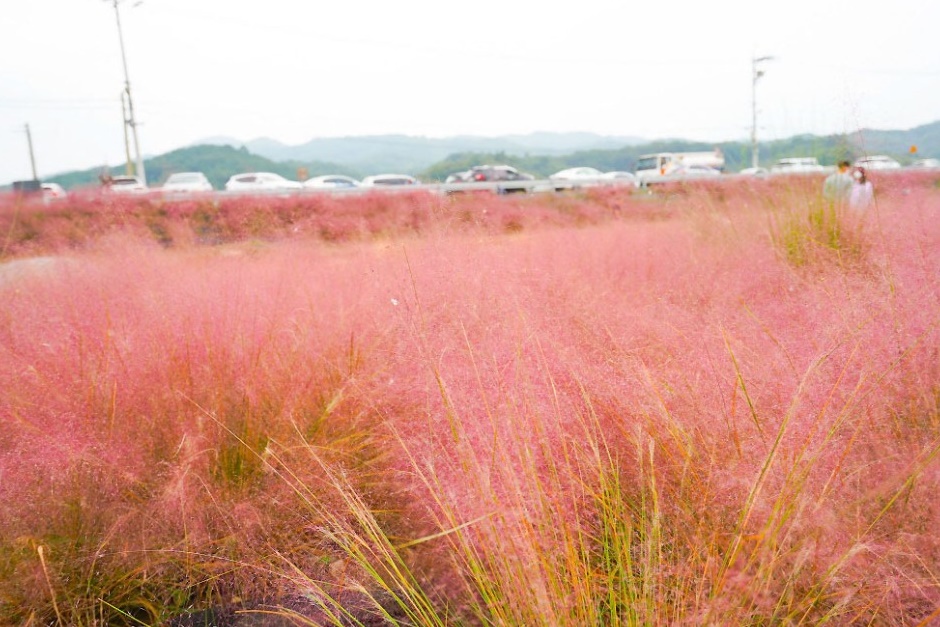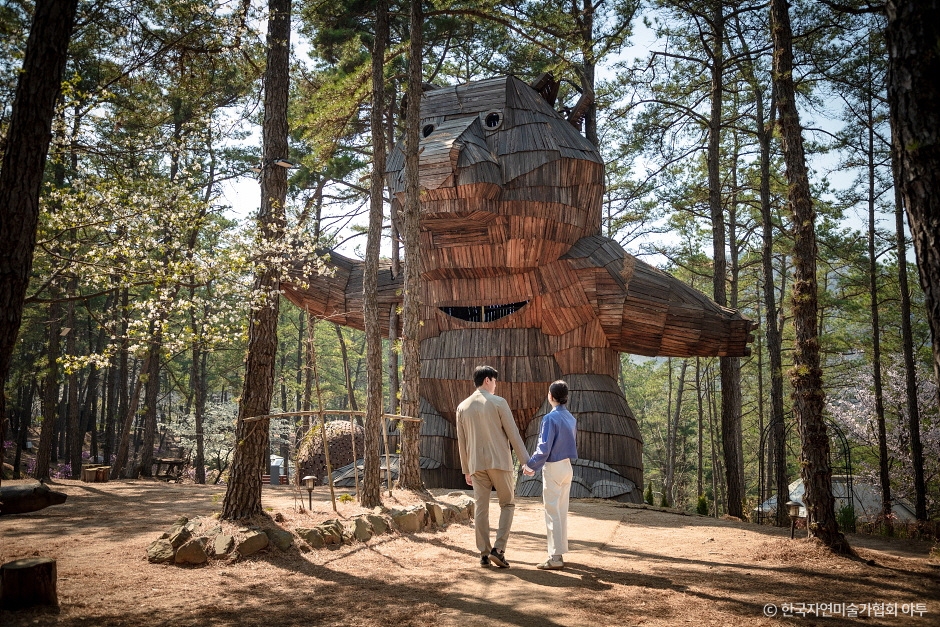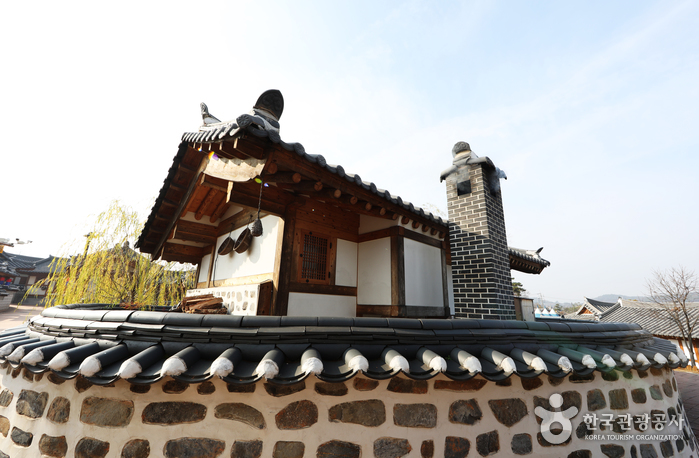Jeongnimsa Temple Site & Sabi-gil (정림사지와 사비길)
14.5Km 2025-08-18
83 Jeongnim-ro, Buyeo-eup, Buyeo-gun, Chungcheongnam-do
Jeongnimsa Temple Site, located in the city center of Baekje, the capital during the Sabi dynasty, is a representative Buddhist site of Baekje. Even after the fall of Baekje, the Five-story Stone Pagoda of Jeonnimsa Temple Site still stands tall today, revealing the historical significance of Baekje. Sabi-gil, an eco-friendly walking trail, takes visitors around many popular attractions from the Baekje era, allowing a glimpse into the history and culture of Baekje.
Buyeo National Museum (국립부여박물관)
14.8Km 2021-08-13
5, Geumseong-ro, Buyeo-gun, Chungcheongnam-do
+82-41-833-8562
Buyeo National Museum was first established by the Buyeo Preservation Society in 1929 as a collection of relics and artifacts related to the Baekje kingdom. This collection was on display at a government building from the Joseon dynasty until 1970, when a new building was erected on the southern foothills of Busosan Mountain. It moved again on August 6, 1993 to the current location. The museum has four exhibition halls and an outdoor exhibit with a total of about 1,000 relics on display.
Seodong Park and Gungnamji Pond (서동공원과 궁남지)
15.5Km 2024-06-04
52 Gungnam-ro, Buyeo-gun, Chungcheongnam-do
+82-41-830-2953
Gungnamji Pond, a Historic Site located in Seodong Park, is Korea’s first artificial pond and was created by King Mu from the Baekje dynasty, who fell in love with and eventually married Princess Seonhwa. Gungnamji, literally means a pond in the south of the royal palace in Korean, was the given name according to the Samguksagi records.
According to a record in the Samguksagi, the History of the Three Kingdoms, King Mu dug this lake south of his palace in the 35th year of his reign (634) and connected it by a 7800-meter long waterway to the water source. The king then had willow trees planted around the bank and had an artificial mound constructed in the middle of the lake.
Yeonkkot Iyagi (연꽃이야기)
15.7Km 2024-12-10
Yeonkkot Iyagi, which literally means “lotus story,” is a restaurant in Buyeo, Chungcheongnam-do that uses lotus and lotus leaves. It is a restaurant that offers a variety of menu items in addition to lotus leaf rice and lotus tea, which can be enjoyed together during the meal. Lotus leaf rice contains ingredients such as jujubes, ginkgo nuts, and pumpkin seeds, and the scent of lotus leaves permeates the freshly steamed glutinous rice, offering a fragrant meal. The restaurant also has an impressive children's menu called lotus pork cutlet. Another thing to take note of are the lotuses added in the side dishes.
Yugu Pink Muhly Garden (유구핑크뮬리정원)
16.0Km 2025-02-04
648-18 Yuguri, Yugu-eup, Gongju-si, Chungcheongnam-do
Yugu Pink Muhly Garden boasts a breathtaking sea of cotton candy-like pink muhly, with its flowers peaking in fall. The garden also features an eco-playground with a sand play area, a play tunnel, and spider nets. Nearby attractions include a hydrangea garden, a traditional market, a mural street, and a textile history exhibition hall, making it an ideal spot for a combined tour.
Yugu Mural Street (유구벽화거리)
16.3Km 2024-12-24
34-5 Sijang-gil, Yugu-eup, Gongju-si, Chungcheongnam-do
Yugu Mural Street is centered around a textile factory that has operated since the 1950s. The walls surrounding the factory feature murals of elderly women weaving at looms, spinning machines, and vibrant tile mosaics. Visitors can learn about the history of the textile industry through dioramas, while the Yugu Textile History Exhibition Hall displays various weaving machines. With a traditional market nearby, it's an excellent destination for a combined tour.
Yugu Saekdong Hydrangea Garden (유구색동수국정원)
16.5Km 2025-02-04
44 Changmal-gil, Yugu-eup, Gongju-si, Chungcheongnam-do
Stretching along a 1-kilometer riverside, Yugu Saekdong Hydrangea Garden showcases a stunning display of hydrangeas, with photo spots scattered throughout. In addition to hydrangeas, cherry trees, peonies, daffodils, and other flowers bloom year-round. During peak hydrangea season in early summer, the garden comes alive with cultural and artistic performances, including busking. Visitors can also participate in hands-on activities like making hydrangea soap, candles, and cup holders. Its proximity to Yugu Traditional Market makes it a perfect stop for a connected tour.
Buyeo Naseong Fortress [UNESCO World Heritage] (부여 나성 [유네스코 세계문화유산])
17.0Km 2021-07-22
100-11, Dongmun-ro142beon-gil, Buyeo-gun, Chungcheongnam-do
+82-41-830-2623
Buyeo Naseong, also known as the Outer City Wall, was built to protect the capital of Baekje, Sabi. It has a x_height of about 8.4 kilometers. The wall surrouned Busosanseong Fortress and extended to the city of Buyeo.
The wall is one of the oldest walls along with Naseong in Pyeongyang and it is estimated to have been built around 538, when the Baekje capital was changed from Woonjin (current Gongju) to Sabi (current Buyeo). The wall of the fortress starts from the site where Dongmun (East gate) was located to the area of Geumgang River, made by piling soil up. However, only a few traces remain of its former glory.
For now, it leaves a blurry trail including a 20 meter area to the east of Cheongsanseong Fortress, Dongmun Bridge from Seokmok-ri, and an area from Pilseobong Peak to Yeomchang-ri. While the outer wall is sharply sloped, the inner wall was built with a gentle slope to make it easier for horses to reach the guard posts on the top of the wall. Inside the fortress, the palace of Baekje, government offices, houses, temples, stores and protected facilities can be seen. The entire structure of Naseong Fortress features Geumgang River in the south and west sides, providing a natural double-defense system. The wall was one of the important outer defense facilities along with Cheongsanseong and Cheongmasanseong Fortresses.
* Area: 554,591 ㎡
Yeonmisan Nature Art Park (연미산자연미술공원)
18.2Km 2025-02-04
98 Yeonmisangogae-gil, Useong-myeon, Gongju-si, Chungcheongnam-do
Yeonmisan Nature Art Park features sculptures created from natural materials, such as clay, wood, and stone. The park exhibits new works each year under different themes as part of the Geumgang Nature Art Biennale, an international festival of nature art. It includes indoor and outdoor exhibitions, as well as a promotion hall. Visitors can participate in experience programs such as woodcraft workshops and nature art school activities.
Gongju Hanok Village (공주한옥마을)
18.3Km 2024-12-23
12 , Gwangwangdanji-gil, Gongju-si, Chungcheongnam-do
+82-41-881-2828
Gongju Hanok Village is in Gongju, Chungcheonnam-do, midway between the Songsan Ancient Tombs - burial place of King Muryeong of Baekje and his queen - and Gongju National Museum. The hanok are ondol-heated and have a card key security system. The village offers both individual and group accommodation, each in a different building; in the group buiding each room has a separate locker room and shower. Baekje history and culture programs on offer include a Baekje costumes experience, a royal tea ceremony, royal candies and Baekje relics.




![Buyeo Naseong Fortress [UNESCO World Heritage] (부여 나성 [유네스코 세계문화유산])](http://tong.visitkorea.or.kr/cms/resource/71/2725771_image2_1.jpg)


 English
English
 한국어
한국어 日本語
日本語 中文(简体)
中文(简体) Deutsch
Deutsch Français
Français Español
Español Русский
Русский